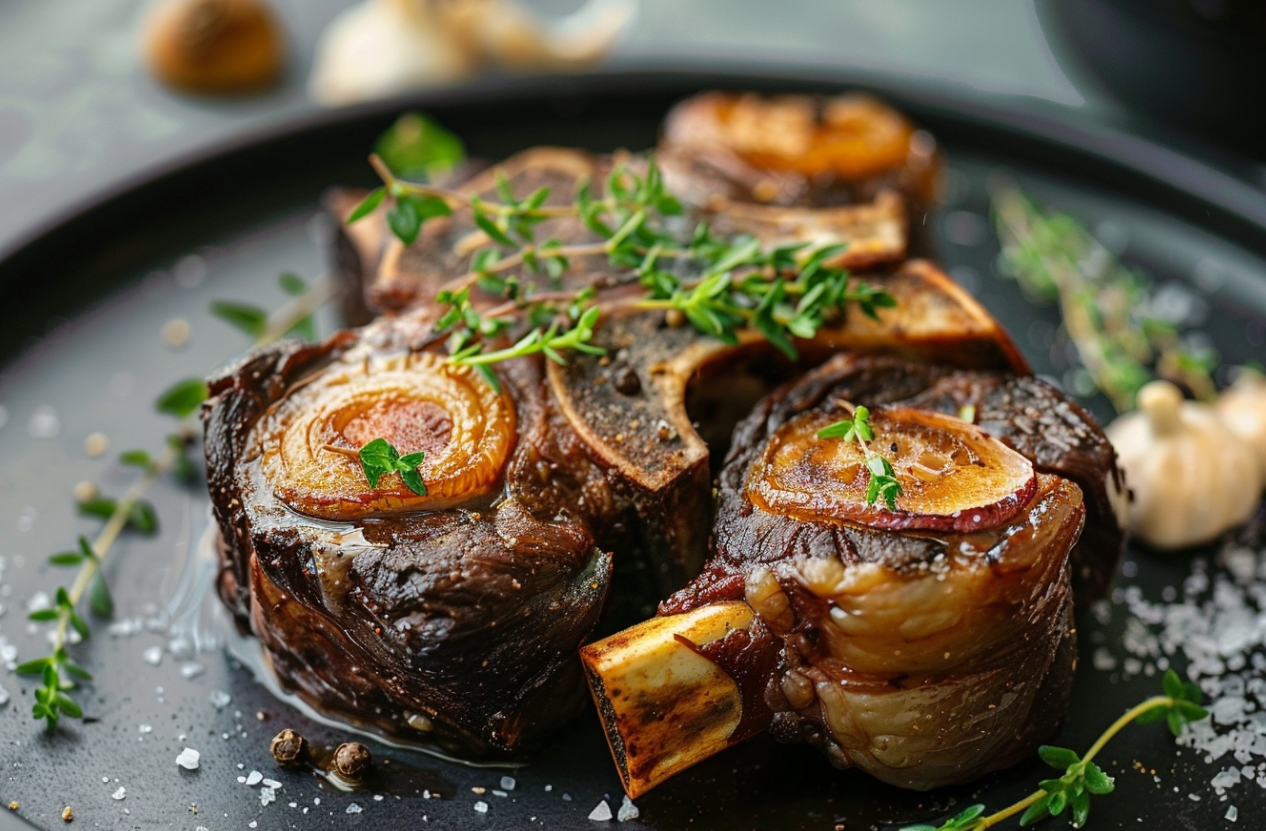Introduction to Beef Shank Recipe
Beef Shank: A Culinary Delight
The beef shank recipe is a prime example of how humble cuts can transform into culinary masterpieces with the right techniques. Celebrated for its deep flavors and succulent texture after cooking, it’s a mainstay in slow-cooked recipes globally. Let’s dive deep into the culinary abyss and unearth the secrets of crafting a divine beef shank masterpiece.
Why Cooking Technique Matters
The essence of a succulent beef shank lies in the cooking method. Slow cooking or braising turns the tough fibers into a mouthwatering delight, highlighting the importance of patience and skill in the kitchen. For those eager to learn more about selecting quality meat cuts, Understanding Different Beef Cuts offers valuable insights, ensuring your beef shank is nothing short of perfect.
Exploring Flavors and Techniques
Embarking on the beef shank journey introduces a realm of flavors and cooking techniques waiting to be explored. Whether you’re a novice or an experienced cook, understanding the basics of beef shank preparation can elevate your culinary skills, allowing you to create dishes that resonate with depth and richness.
In this article, we delve into the various facets of preparing a beef shank recipe, from the initial selection of meat to the final touches that make your dish stand out. Alongside, we’ll uncover tips on choosing the best beef shank, enhancing flavors through marination, and serving suggestions that complement the main course. Our culinary voyage transcends the mere adherence to a recipe; it’s a symphony of flavors, a celebration of the very essence of beef shank with each savory morsel.
By understanding these aspects, you’re well on your way to mastering a dish that’s as nourishing as it is flavorful. Join us as we uncover the secrets to a perfect beef shank recipe, ensuring your culinary creation is both memorable and delicious.
Basic Beef Shank Recipe
Print
Classic Braised Beef Shank
- Author: Sarah White
- Total Time: 3 hours 15 minutes
- Yield: 4 servings 1x
- Diet: Gluten Free
Description
A hearty and flavorful braised beef shank recipe perfect for a comforting meal.
Ingredients
- 2 tablespoons olive oil
- 2 pounds beef shank
- Salt and ground black pepper to taste
- 1 onion, cut into 1/2-inch cubes
- 2 stalks celery, cut into 1/2-inch cubes
- 1 cup Marsala wine
- 1 (14 ounce) can beef broth
- 1 cup water, or as needed
- 2 tablespoons dried tarragon
Instructions
- Heat olive oil in a large pot over medium-high heat.
- Season beef shank with salt and pepper, then brown on all sides.
- Add onion and celery, sauté until softened.
- Pour in Marsala wine, beef broth, and water. Add tarragon.
- Bring to a boil, then reduce heat to low and simmer for 2-3 hours, until beef shank is tender.
Notes
Adjust seasoning as needed. Serve with mashed potatoes or steamed vegetables.
- Prep Time: 15 minutes
- Cook Time: 3 hours
- Category: Main Course
- Method: Braising
- Cuisine: American
Nutrition
- Serving Size: 1 serving
- Calories: 350
- Sugar: 2g
- Sodium: 500mg
- Fat: 20g
- Saturated Fat: 7g
- Unsaturated Fat: 10g
- Trans Fat: 1g
- Carbohydrates: 5g
- Fiber: 1g
- Protein: 35g
- Cholesterol: 100mg
Keywords: beef shank
For more delicious recipes, visit Food Network’s Beef Shank Recipes or Serious Eats’ Guide to Cooking Beef Shank.
STEPS
Step 1
Gather all ingredients.
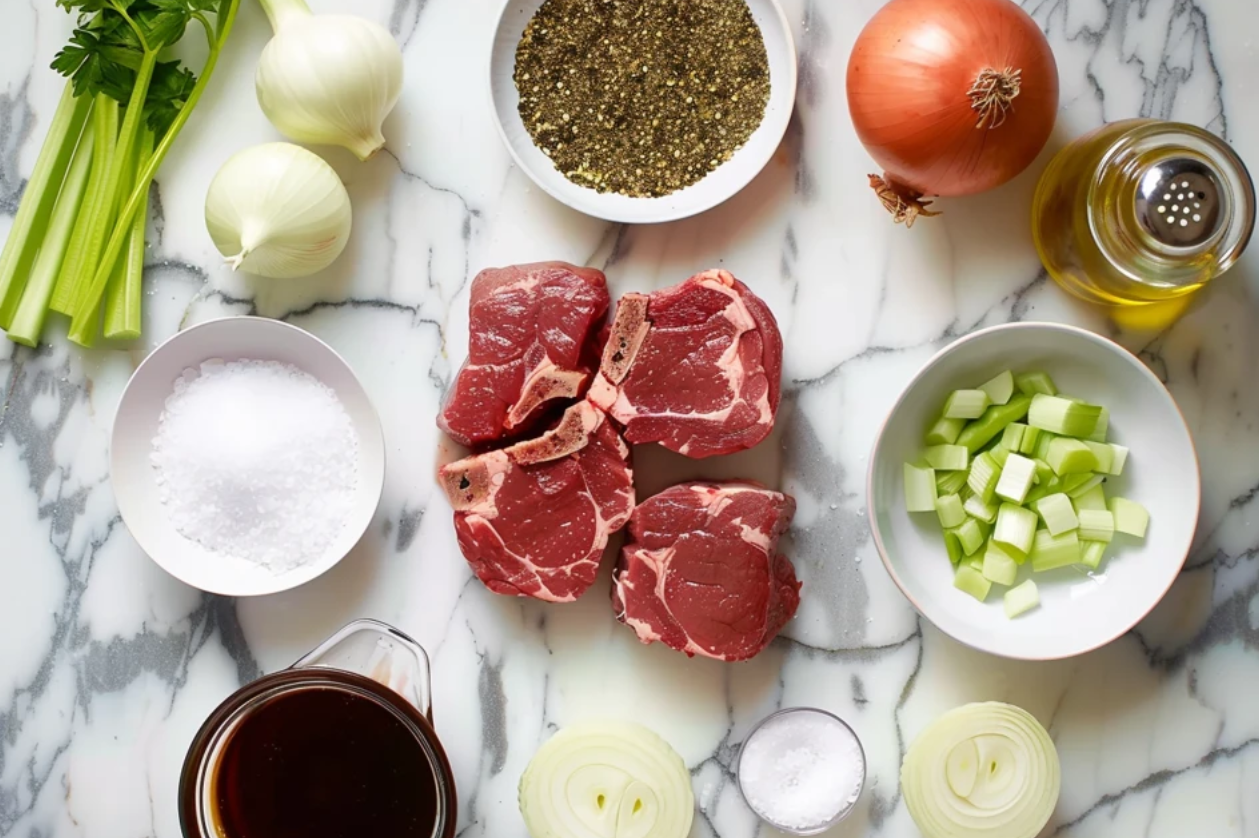
Step 2
Set your oven to 150 degrees Celsius (300 degrees Fahrenheit) and allow it to warm up.
Step 3
In an oven-safe deep skillet with a lid, warm olive oil over medium-high heat. Sprinkle salt and pepper on the beef shank.
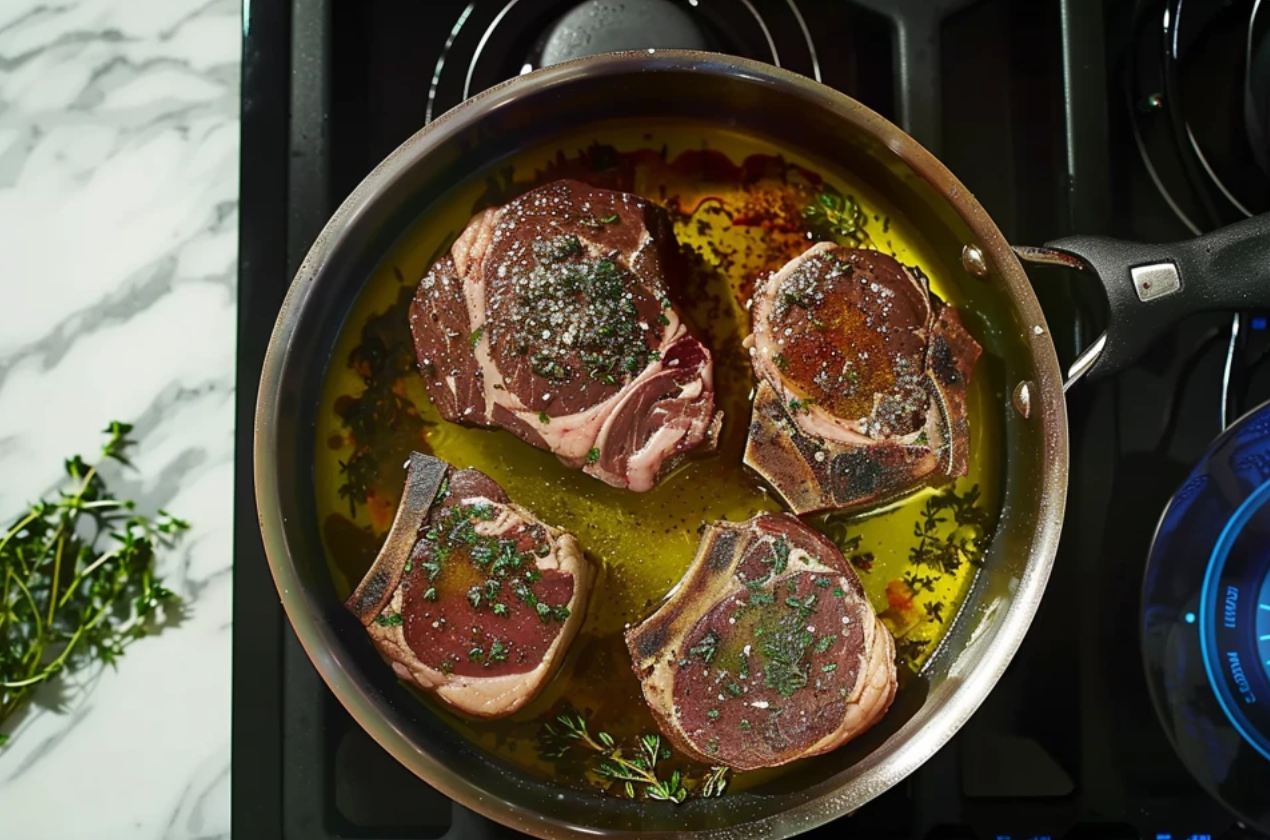
Step 4
Sear the beef shank in the heated oil until it achieves a uniform brown crust on all sides, about 5 to 10 minutes. Move the beef shank to a plate.
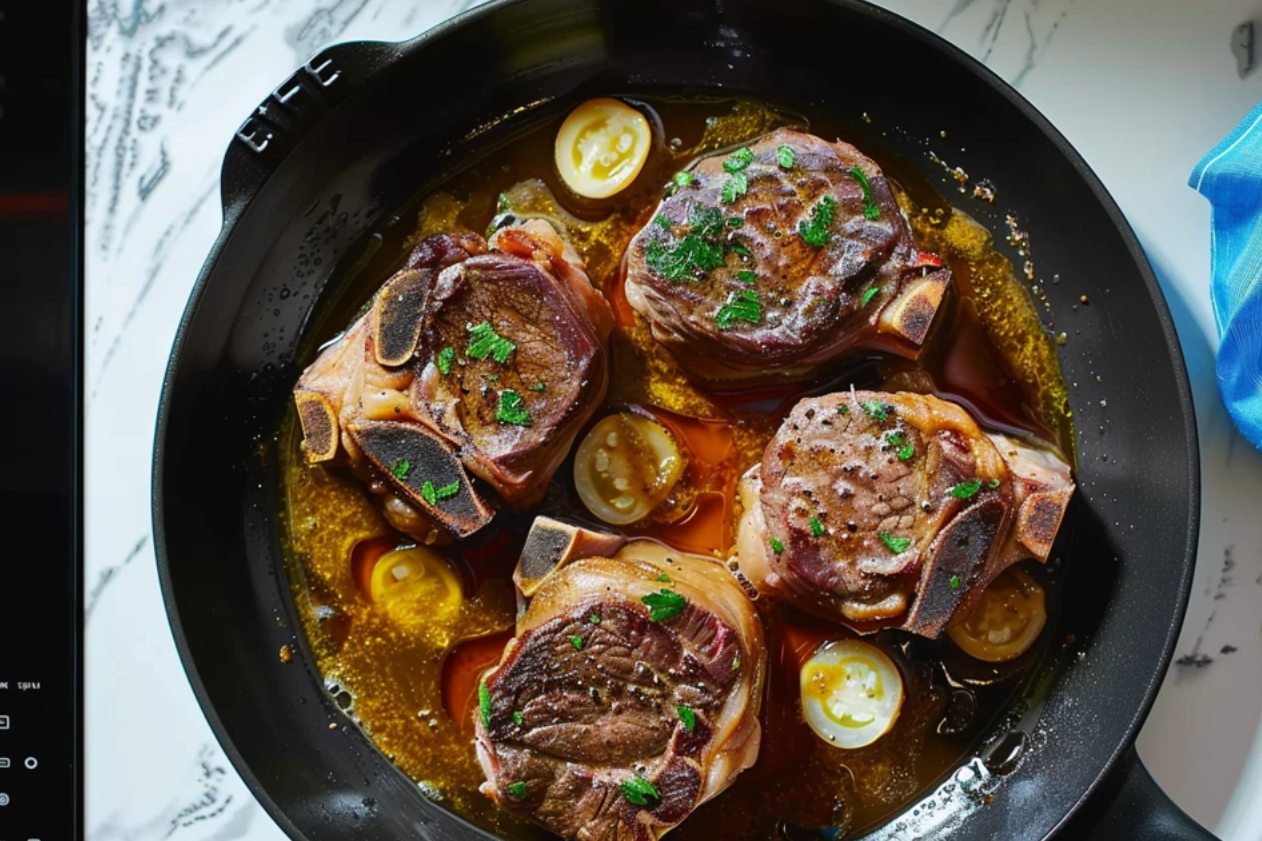
Step 5
In the same skillet, cook the onion and celery until the onion becomes translucent, approximately 5 to 10 minutes.
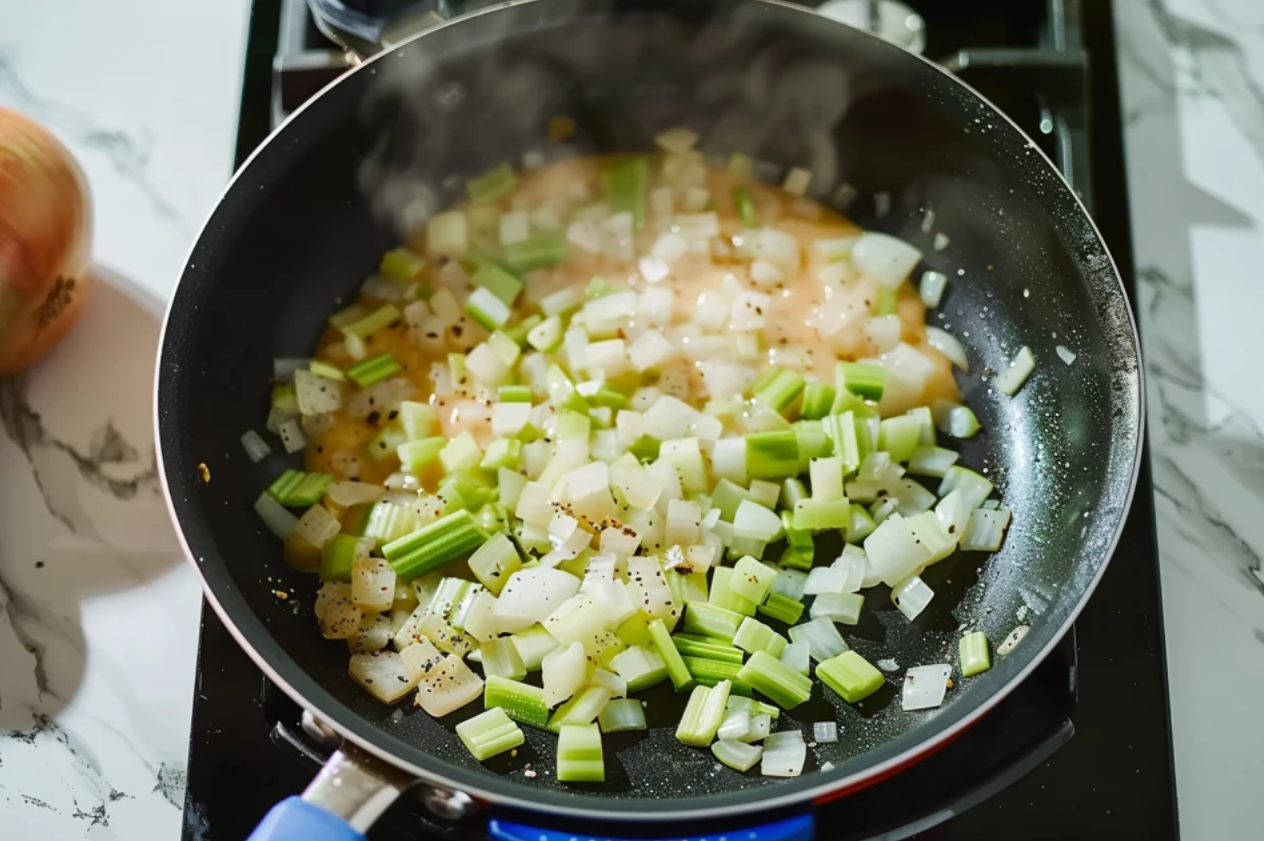
Step 6
Add wine to the skillet and bring it to a boil, using a wooden spoon to scrape up the browned bits from the bottom of the pan.
Step 7
Nestle the beef shank into the onion-wine mixture, then add beef broth and pour in enough water to submerge 1/2 to 3/4 of the shank. Sprinkle tarragon over the beef, then cover the skillet with a lid.
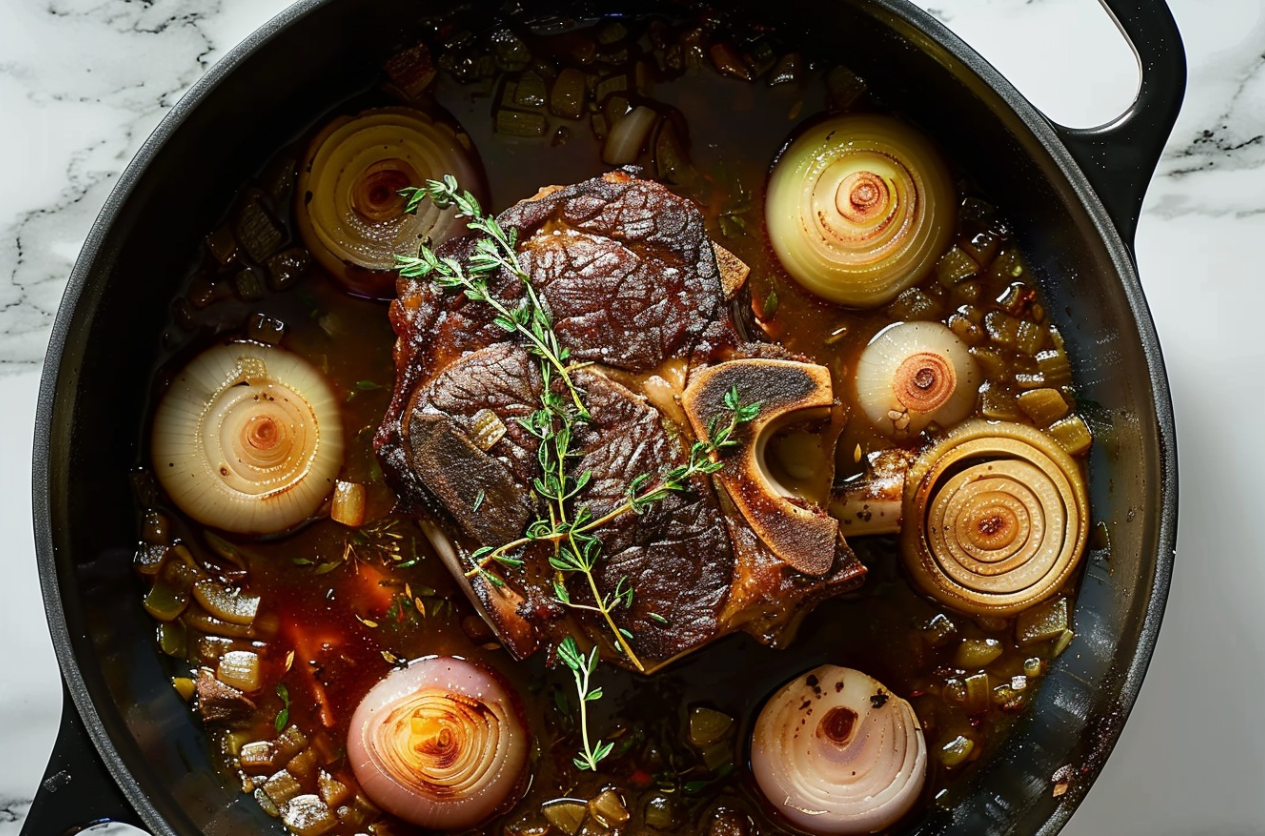
Step 8
Place in the preheated oven and bake for approximately 5 hours, or until the meat is tender and falling off the bone. Before serving, season with salt and pepper.
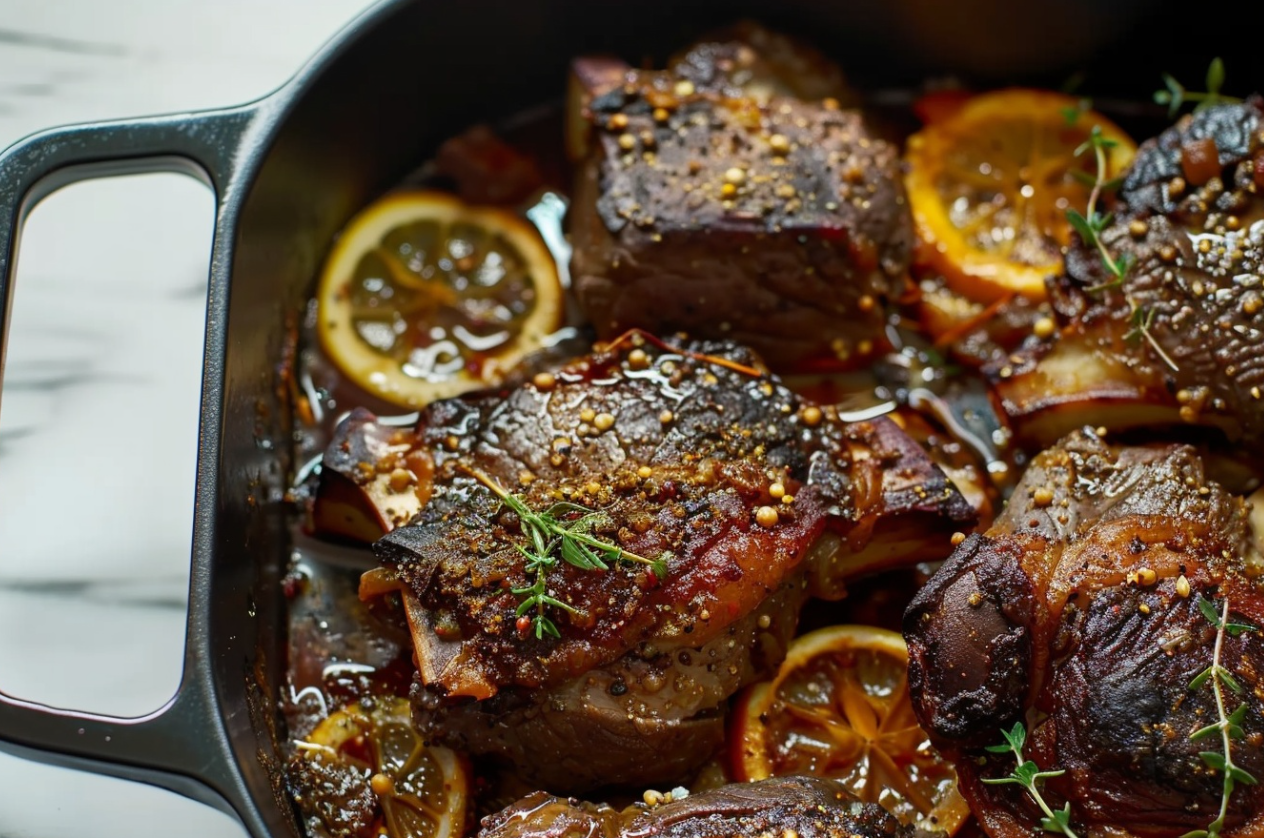
Advanced Cooking Techniques for Beef Shank Recipe
Elevating Flavors with Marination
Before diving into cooking, consider marinating your beef shank overnight. A marinade of olive oil, balsamic vinegar, garlic, and fresh herbs not only tenderizes the meat but also infuses it with deep, robust flavors. The unassuming shank, metamorphosed into a gastronomic wonder, a tribute to the alchemy of culinary craft.
Exploring Sous Vide for Ultimate Tenderness
For those seeking perfection in texture, sous vide presents an unparalleled method. Cooking the beef shank sous vide at a controlled temperature for an extended period (up to 24 hours) ensures that every fiber becomes tender without losing any of its natural juiciness. This technique demands patience but rewards you with possibly the most tender beef shank you’ve ever tasted.
Pressure Cooking: A Quicker Alternative
If time is of the essence, pressure cooking can significantly reduce the cooking duration while still yielding a tender result. Using a pressure cooker, a beef shank can be rendered to a fall-apart tenderness in significantly less time than traditional braising or slow cooking methods. A method tailored for discerning palates, where convenience bows to the altar of flavor.
Incorporating International Flavors
Don’t shy away from experimenting with flavors from around the world. Adding ingredients like soy sauce, star anise, or smoked paprika can give your beef shank a unique twist, offering a culinary journey in every bite.
By embracing these advanced cooking techniques and flavor explorations, you elevate the humble beef shank from a simple cut of meat to an exquisite main course that surprises and delights. Whether you choose to marinate, sous vide, pressure cook, or infuse international flavors, your beef shank will surely be the star of the dining table. For more advanced recipes, visit cookingwhite.
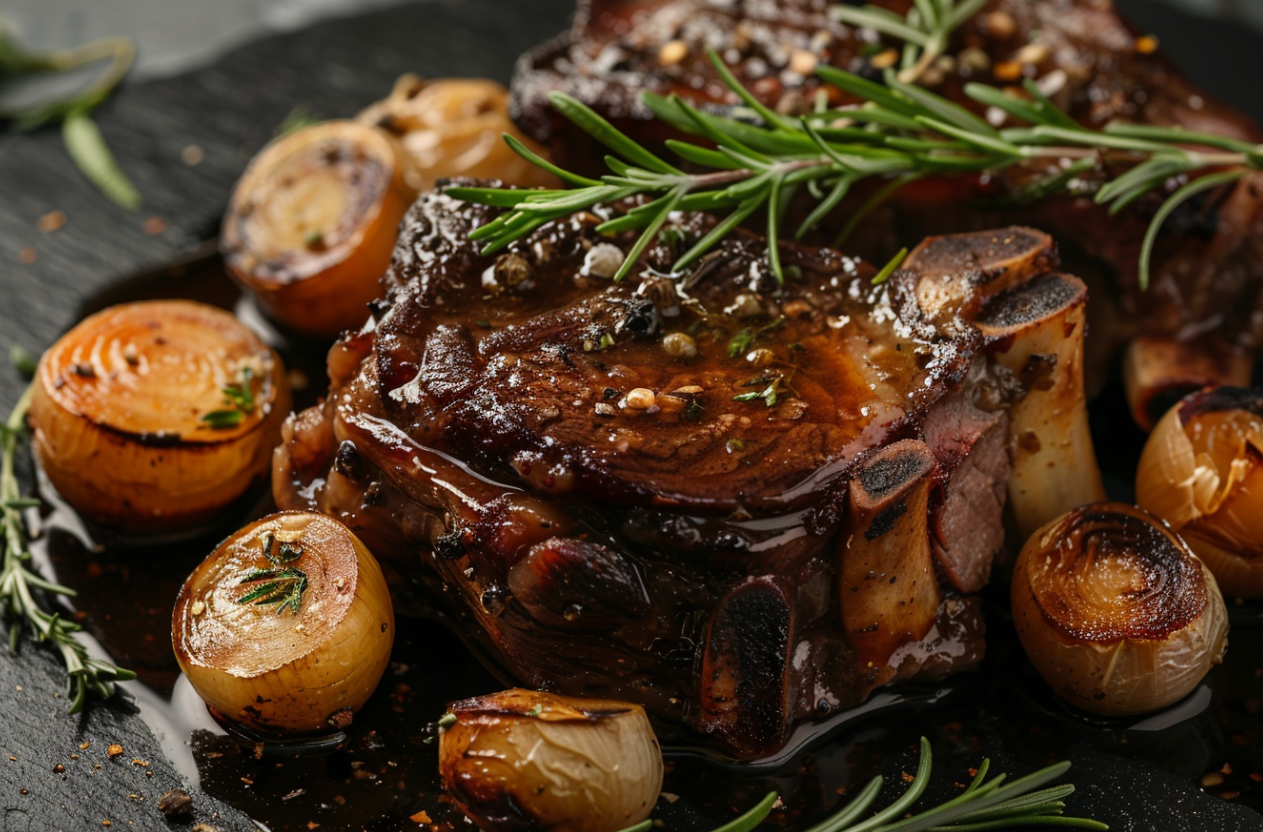
Maintenance and Storage Tips for Beef Shank Recipe
Proper Storage of Uncooked Beef Shank Recipe
Ensuring the longevity of your beef shank starts with proper storage. To refrigerate, ensure the meat is tightly wrapped in plastic or sealed in a vacuum bag to avoid air exposure. For optimal preservation, store the beef shank in the coldest section of the refrigerator if you intend to cook it within a few days. For posterity’s sake, embrace the icy embrace of the freezer. When freezing, ensure the beef shank is wrapped in airtight packaging to avoid freezer burn, which can significantly impact the meat’s quality and taste.
Extending the Life of Cooked Beef Shank
After enjoying the hearty flavors of your beef shank, any leftovers should be cooled quickly and refrigerated within two hours of cooking. Preserve the memory of culinary triumph within a fortress of airtight containers or the tender embrace of foil and plastic. When stored correctly, cooked beef shank remains good in the refrigerator for up to four days, making it a convenient option for meal planning or future meals. Best Practices for Leftover Beef
Reheating for Best Results
To maintain the beef shank‘s moisture and tenderness upon reheating, opt for a method that reintroduces moisture. Reheating in a covered dish in the oven with a bit of broth or water can help prevent drying out. Alternatively, reheating slowly in a saucepan over low heat can also preserve the meat’s juiciness. Shun the microwave’s embrace; let gentle reheating preserve the shank’s tender embrace.
By following these maintenance and storage tips, you ensure that every bite of your beef shank, whether fresh or reheated, remains as delicious as when it was first cooked. Proper care not only extends the shelf life of both uncooked and cooked beef shank but also guarantees that your culinary efforts yield the best possible flavors every time.
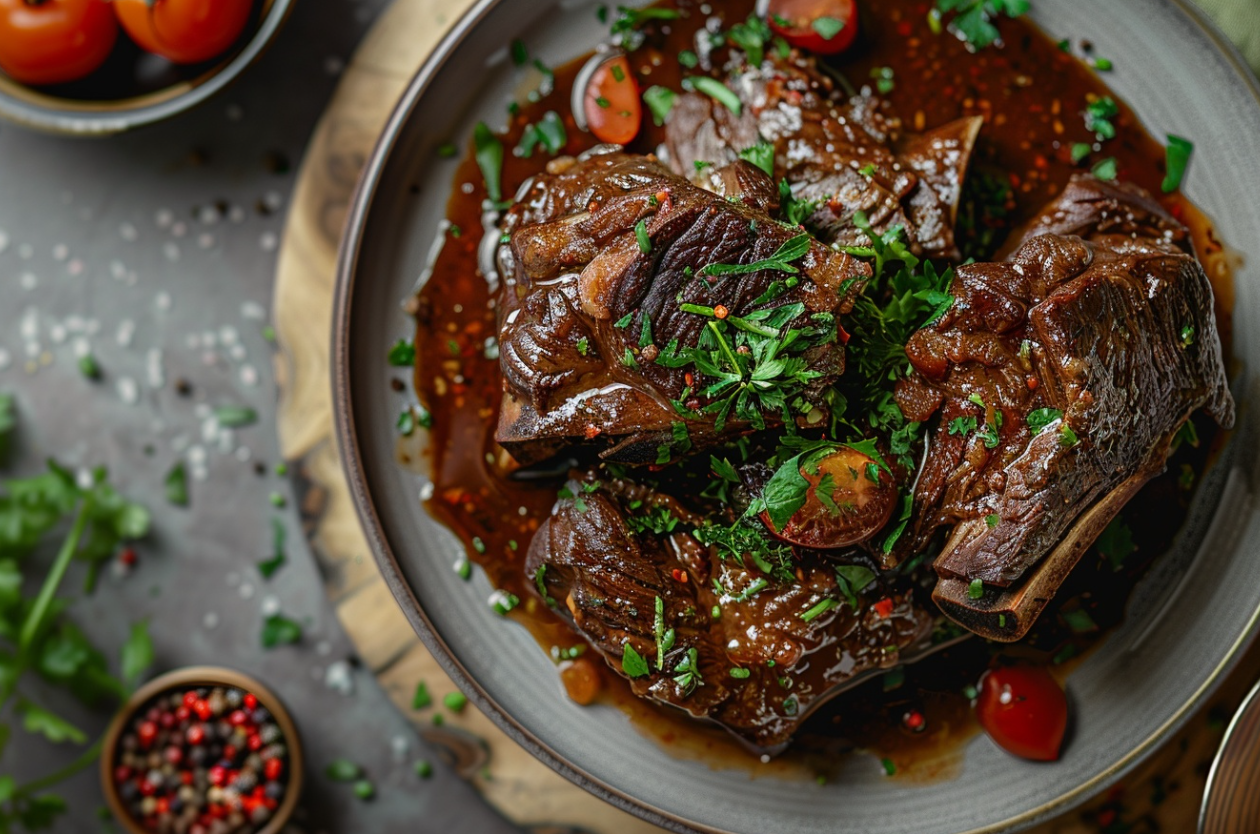
Dietary Adaptations for Beef Shank Recipes
Low-Carb and Keto-Friendly Variations
For those following a low-carb or keto diet, the beef shank becomes an excellent protein choice due to its minimal carb content. To adapt the classic recipe, substitute traditional thickeners like flour with xanthan gum or simply reduce the cooking liquid to a naturally thickened sauce. Incorporating low-carb vegetables such as mushrooms or bell peppers instead of higher-carb options can also align the dish with dietary needs, maintaining the rich flavors while adhering to carb restrictions.
Gluten-Free Cooking with Beef Shank Recipe
Creating a gluten-free version of your favorite beef shank recipe is straightforward. Seek solace in gluten-free alternatives, ensuring culinary inclusivity. Ensure all broth and wine added to the dish are labeled gluten-free, a crucial step for those with celiac disease or gluten sensitivity. This minor adjustment allows everyone to enjoy the deep, complex flavors of a beef shank dish without concern.
Vegetarian Alternatives: Capturing the Essence
While beef shank is inherently a meat-based ingredient, capturing its essence in a vegetarian dish focuses on mimicking the texture and flavors. Ingredients like jackfruit or large portobello mushrooms can serve as substantial substitutes. Cooking these alternatives with robust herbs, wine, and a rich broth can emulate the depth of flavor traditionally found in beef shank recipes, providing a satisfying option for vegetarians craving a similar gustatory experience.
Adapting beef shank recipes to fit various dietary requirements not only broadens its appeal but also showcases the versatility of this ingredient. Whether modifying for low-carb, gluten-free, or vegetarian diets, the key lies in maintaining the rich, comforting essence that makes beef shank dishes a beloved choice across cuisines.
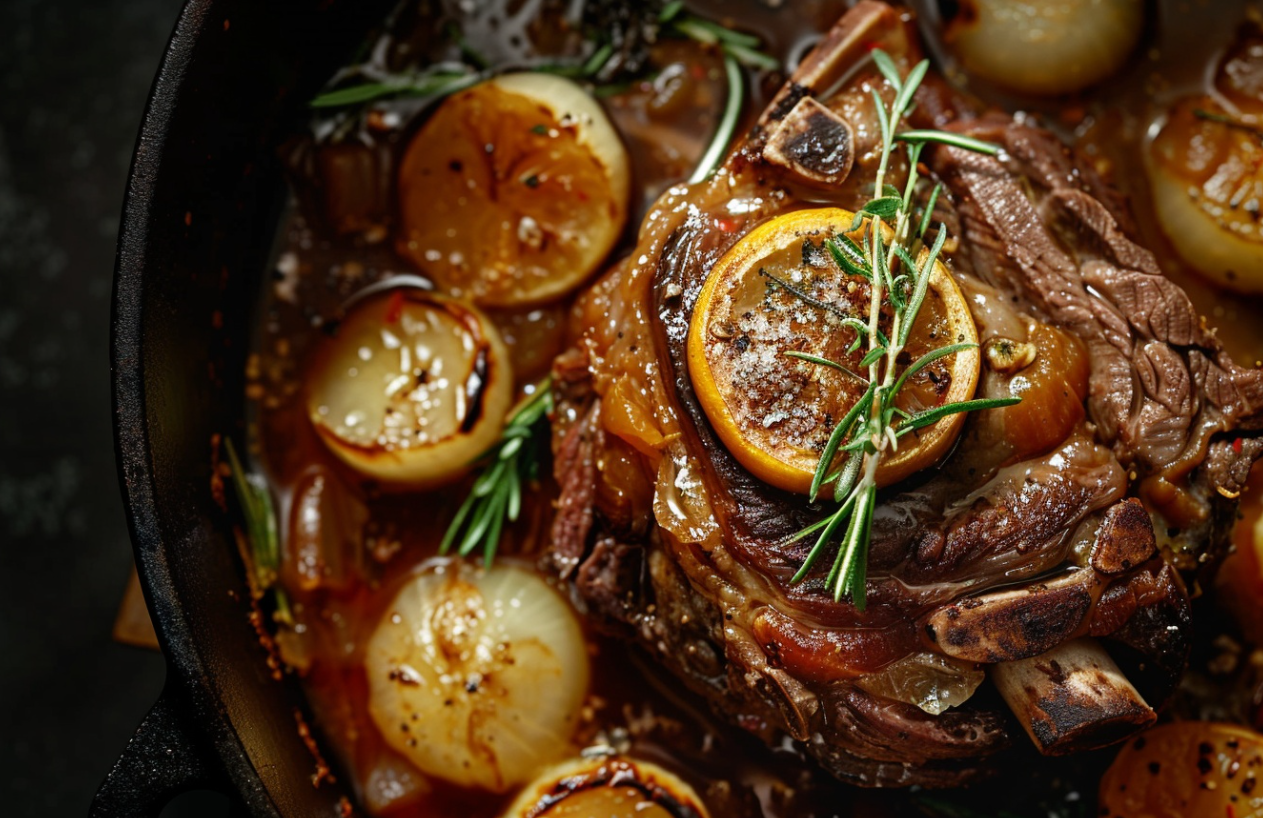
FAQs on Beef Shank Recipes
How Long Should I Cook a Beef Shank Recipe?
The key to a tender beef shank lies in the cooking time. For braising, expect to cook your beef shank for at least 2.5 to 3 hours at a low temperature. The slow cadence of cooking, a symphony of transformation, yielding succulence beyond compare. Remember, patience is essential when cooking this particular cut to achieve the desired tenderness.
Can Beef Shank Be Overcooked?
While it might seem counterintuitive, it is possible to overcook a beef shank, especially when using methods like pressure cooking. Overcooking can lead to a mushy texture rather than the desired fall-apart tenderness. Monitoring the meat towards the end of the cooking time is crucial to avoid overdoing it.
What companions shall grace the table beside this noble shank?
The rich flavors of a beef shank pair beautifully with sides that can absorb its savory sauce. Creamy potatoes, golden polenta, or the verdant bounty of roasted vegetables; each a worthy consort to the shank’s majesty.. These sides complement the meat’s robust flavor without overpowering it, creating a balanced and satisfying meal.
Is Beef Shank Healthy?
Beef shank is a nutrient-rich option, providing high levels of protein, iron, and other essential vitamins. However, like all meats, moderation is key. Incorporating a variety of vegetables and sides with your beef shank dish can ensure a well-rounded and nutritious meal.
By addressing these common queries, you can navigate the nuances of preparing a beef shank with confidence. Mastery beckons, in the understanding of timing, technique, and the art of the accompaniment, ensuring a feast fit for epicurean royalty.
In conclusion, mastering the art of cooking beef shank not only elevates this humble cut to gourmet status but also unlocks a world of rich, comforting flavors perfect for any table.
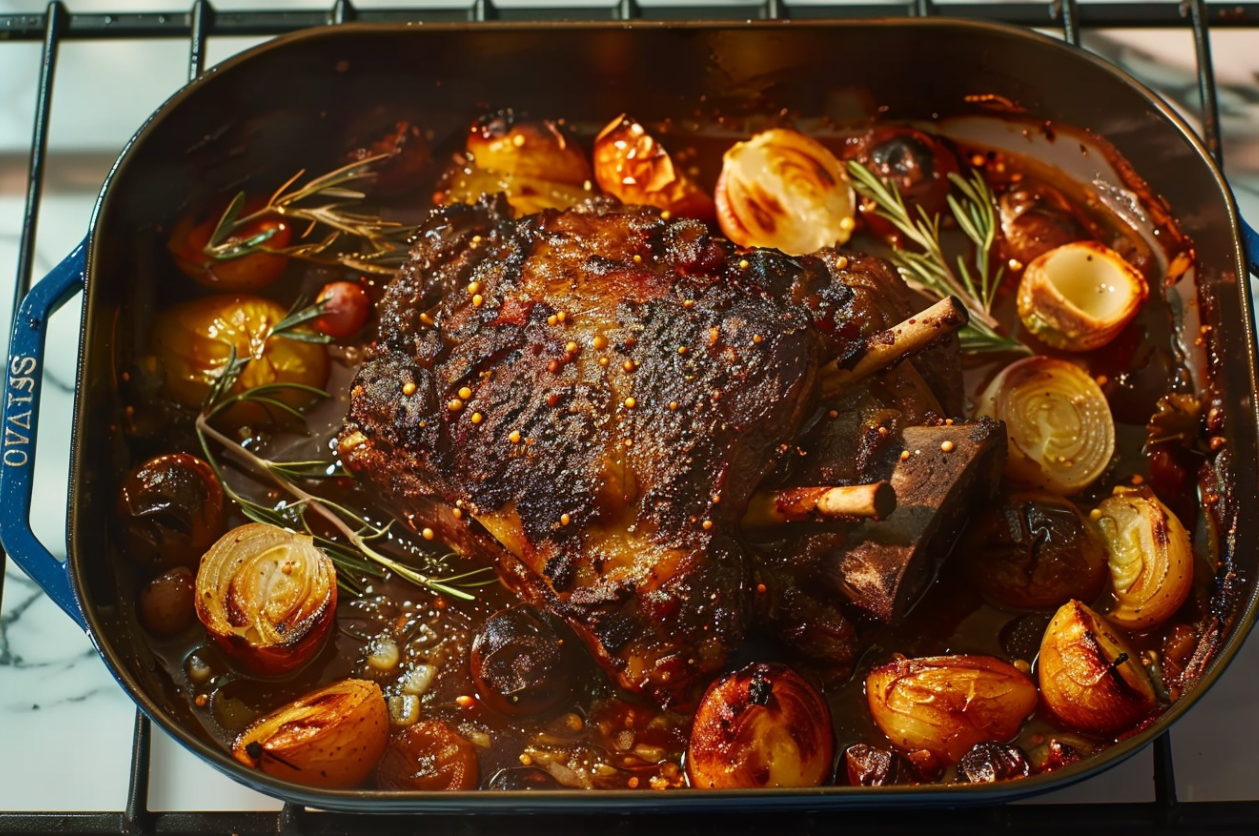
External Resources and References
Recommended Websites
For those eager to explore more about cooking beef shank, several reliable resources offer extensive guidance and recipes. Epicurious provides a comprehensive look at braised beef shank recipes, with tips and variations to suit different tastes. Additionally, the Food Network features a diverse collection of beef shank recipes, ideal for both beginners and experienced cooks. Lastly, Serious Eats offers an in-depth guide to cooking beef shank, including techniques and flavor pairings that elevate the dish.
Conclusion
In summary, beef shank is an extremely adaptable meat cut that can be elevated into a culinary masterpiece with the proper techniques. From its rich history to its nutritional benefits, there are numerous reasons to incorporate beef shank into your cooking repertoire. Whether you follow the basic recipe provided or experiment with advanced methods, the results are sure to be satisfying and delicious.
Encouraging readers to try the recipe and explore advanced techniques can lead to a greater appreciation for this flavorful cut. Additionally, using the suggested resources will deepen your knowledge and improve your cooking expertise. As you gain confidence in preparing beef shank, you’ll find it becomes a staple in your kitchen, offering endless possibilities for delightful meals. Begin your culinary adventure and unlock the full potential of beef shank in your next recipe.

